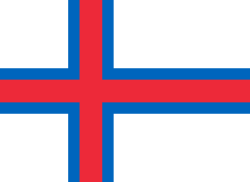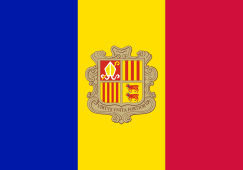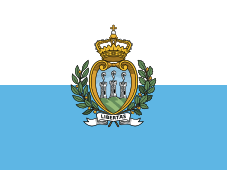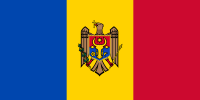2017–18 UEFA Champions League
|
The NSC Olimpiyskiy Stadium in Kiev will host the final | |
| Tournament details | |
|---|---|
| Dates |
June/July – August 2017 (qualifying) September 2017 – 26 May 2018 (competition proper) |
| Teams |
32 (group stage) 77 or 78 or 79 (total) (from 53 or 54 associations) |
The 2017–18 UEFA Champions League will be the 63rd season of Europe's premier club football tournament organised by UEFA, and the 26th season since it was renamed from the European Champion Clubs' Cup to the UEFA Champions League.
The 2018 UEFA Champions League Final will be played at the NSC Olimpiyskiy Stadium in Kiev, Ukraine.[1]
The winners of the 2017–18 UEFA Champions League will qualify as the UEFA representative at the 2018 FIFA Club World Cup in the United Arab Emirates, and also earn the right to play against the winners of the 2017–18 UEFA Europa League in the 2018 UEFA Super Cup.
Association team allocation
A total of 77, 78 or 79 teams from 53 of the 55 UEFA member associations are expected to participate in the 2017–18 UEFA Champions League (the exception being Liechtenstein, which does not organise a domestic league; the participation of teams from Kosovo, who became a UEFA member on 3 May 2016, is to be confirmed).[3] The association ranking based on the UEFA country coefficients is used to determine the number of participating teams for each association:[2]
- Associations 1–3 each have four teams qualify.
- Associations 4–6 each have three teams qualify.
- Associations 7–15 each have two teams qualify.
- Associations 16–54 (except Liechtenstein) each have one team qualify.
- The winners of the 2016–17 UEFA Champions League and 2016–17 UEFA Europa League are each given an additional entry if they do not qualify for the 2017–18 UEFA Champions League through their domestic league. Because a maximum of five teams from one association can enter the Champions League, if both the Champions League title holders and the Europa League title holders are from the same top three ranked association and finish outside the top four of their domestic league, the fourth-placed team of their association will be moved to the Europa League.[4]
Association ranking
For the 2017–18 UEFA Champions League, the associations are allocated places according to their 2016 UEFA country coefficients, which takes into account their performance in European competitions from 2011–12 to 2015–16.[5][6]
Apart from the allocation based on the country coefficients, associations may have additional teams participating in the Champions League, as noted below:
- (CL) – Additional berth for Champions League title holders
- (EL) – Additional berth for Europa League title holders
|
|
|
Distribution
The table below shows the default access list.[7][8]
| Teams entering in this round | Teams advancing from previous round | ||
|---|---|---|---|
| First qualifying round (8 teams) |
|
||
| Second qualifying round (34 teams) |
|
| |
| Third qualifying round | Champions Route (20 teams) |
|
|
| League Route (10 teams) |
|
||
| Play-off round | Champions Route (10 teams) |
| |
| League Route (10 teams) |
|
| |
| Group stage (32 teams) |
|
| |
| Knockout phase (16 teams) |
| ||
The access list above is provisional, as changes will be made depending on whether the Champions League and Europa League title holders qualify for the tournament via their domestic leagues. The Champions League title holders always enter directly into the group stage. The Europa League title holders also enter directly into the group stage if either they or the Champions League title holders qualify for the group stage via their domestic leagues (if both teams qualify for the group stage via their domestic leagues, the champions of association 13 enter directly into the group stage). Otherwise, the Europa League title holders enter directly the play-off round, with the route they enter depending on the Champions League title holders:
- League Route: If the Champions League title holders have qualified for any round of the League Route, or have not qualified for the tournament via their domestic league and are from the associations 1–12 in the access list.
- Champions Route: If the Champions League title holders have qualified for any round of the Champions Route, or have not qualified for the tournament via their domestic league and are from the associations 13–54 in the access list.
The final access list will then be adjusted accordingly, with teams entering either earlier or later into the competition in order to ensure that the group stage consists of 32 teams and the play-off round consists of 20 teams. UEFA has published a detailed document outlining several possible qualification scenarios,[9] which are also covered in the regulations (Article 3.07).[2]
Teams
League positions of the previous season shown in parentheses (CL: Champions League title holders; EL: Europa League title holders).
| Group stage | |||
|---|---|---|---|
| Play-off round | |||
| Champions Route | League Route | ||
| Third qualifying round | |||
| Champions Route | League Route | ||
| Second qualifying round | |||
| First qualifying round | |||
- Notes
- ^ Republic of Ireland (IRL): If Dundalk win the 2016–17 UEFA Europa League, they will enter either the group stage or the play-off round.
Qualifying rounds
In the qualifying rounds and the play-off round, teams are divided into seeded and unseeded teams based on their 2017 UEFA club coefficients,[10][11] and then drawn into two-legged home-and-away ties. Teams from the same association cannot be drawn against each other.
First qualifying round
A total of eight teams are expected to play in the first qualifying round.
 Víkingur Gøta CC: 2.950
Víkingur Gøta CC: 2.950 Infonet Tallinn CC: 1.300
Infonet Tallinn CC: 1.300 Champions of 2016–17 Armenian Premier League
Champions of 2016–17 Armenian Premier League Champions of 2016–17 Maltese Premier League
Champions of 2016–17 Maltese Premier League Champions of 2016–17 Welsh Premier League
Champions of 2016–17 Welsh Premier League Champions of 2016–17 Gibraltar Premier Division
Champions of 2016–17 Gibraltar Premier Division Champions of 2016–17 Primera Divisió
Champions of 2016–17 Primera Divisió Champions of 2016–17 Campionato Sammarinese di Calcio
Champions of 2016–17 Campionato Sammarinese di Calcio
Note: UEFA club coefficient (CC) at the end of 2016–17 season, which is used for seeding, is listed in italics.[10][11]
Second qualifying round
A total of 34 teams are expected to play in the second qualifying round: 30 teams which enter in this round, and the four winners of the first qualifying round.
 BATE Borisov CC: 29.475
BATE Borisov CC: 29.475 Malmö FF CC: 16.945
Malmö FF CC: 16.945 Astana CC: TBD (16.800)
Astana CC: TBD (16.800) Rosenborg CC: 12.665
Rosenborg CC: 12.665 FH CC: 6.175
FH CC: 6.175 Žalgiris Vilnius CC: 5.825
Žalgiris Vilnius CC: 5.825 Dundalk CC: TBD (5.815)
Dundalk CC: TBD (5.815) IFK Mariehamn CC: 2.030
IFK Mariehamn CC: 2.030 Spartaks Jūrmala CC: 1.975
Spartaks Jūrmala CC: 1.975 Champions of 2016–17 Austrian Football Bundesliga
Champions of 2016–17 Austrian Football Bundesliga Champions of 2016–17 Croatian First Football League
Champions of 2016–17 Croatian First Football League Champions of 2016–17 Ekstraklasa
Champions of 2016–17 Ekstraklasa Champions of 2016–17 Cypriot First Division
Champions of 2016–17 Cypriot First Division Champions of 2016–17 Israeli Premier League
Champions of 2016–17 Israeli Premier League Champions of 2016–17 Danish Superliga
Champions of 2016–17 Danish Superliga Champions of 2016–17 Scottish Premiership
Champions of 2016–17 Scottish Premiership Champions of 2016–17 Azerbaijan Premier League
Champions of 2016–17 Azerbaijan Premier League Champions of 2016–17 Serbian SuperLiga
Champions of 2016–17 Serbian SuperLiga Champions of 2016–17 First Professional Football League
Champions of 2016–17 First Professional Football League Champions of 2016–17 Slovenian PrvaLiga
Champions of 2016–17 Slovenian PrvaLiga Champions of 2016–17 Slovak First Football League
Champions of 2016–17 Slovak First Football League Champions of 2016–17 Nemzeti Bajnokság I
Champions of 2016–17 Nemzeti Bajnokság I Champions of 2016–17 Moldovan National Division
Champions of 2016–17 Moldovan National Division Champions of 2016 Umaglesi Liga
Champions of 2016 Umaglesi Liga Champions of 2016–17 Premier League of Bosnia and Herzegovina
Champions of 2016–17 Premier League of Bosnia and Herzegovina Champions of 2016–17 Albanian Superliga
Champions of 2016–17 Albanian Superliga Champions of 2016–17 Macedonian First Football League
Champions of 2016–17 Macedonian First Football League Champions of 2016–17 Luxembourg National Division
Champions of 2016–17 Luxembourg National Division Champions of 2016–17 Montenegrin First League
Champions of 2016–17 Montenegrin First League Champions of 2016–17 NIFL Premiership
Champions of 2016–17 NIFL Premiership
Note: UEFA club coefficient (CC) at the end of 2016–17 season, which is used for seeding, is listed in italics.[10][11]
Third qualifying round
The third qualifying round is split into two separate sections: Champions Route (for league champions) and League Route (for league non-champions). The losing teams in both sections enter the 2017–18 UEFA Europa League play-off round.
A total of 30 teams are expected to play in the third qualifying round:
Champions Route
Three teams which enter in this round, and the 17 winners of the second qualifying round.
 Champions of 2016–17 Czech First League
Champions of 2016–17 Czech First League Champions of 2016–17 Superleague Greece
Champions of 2016–17 Superleague Greece Champions of 2016–17 Liga I
Champions of 2016–17 Liga I
League Route
Ten teams which enter in this round.
 Third-placed team of 2016–17 Ligue 1
Third-placed team of 2016–17 Ligue 1 Runners-up of 2016–17 Russian Premier League
Runners-up of 2016–17 Russian Premier League Runners-up of 2016–17 Ukrainian Premier League
Runners-up of 2016–17 Ukrainian Premier League.svg.png) Runners-up of 2016–17 Belgian First Division A
Runners-up of 2016–17 Belgian First Division A Runners-up of 2016–17 Eredivisie
Runners-up of 2016–17 Eredivisie Runners-up of 2016–17 Süper Lig
Runners-up of 2016–17 Süper Lig Runners-up of 2016–17 Swiss Super League
Runners-up of 2016–17 Swiss Super League Runners-up of 2016–17 Czech First League
Runners-up of 2016–17 Czech First League Runners-up of 2016–17 Superleague Greece
Runners-up of 2016–17 Superleague Greece Runners-up of 2016–17 Liga I
Runners-up of 2016–17 Liga I
Play-off round
The play-off round is split into two separate sections: Champions Route (for league champions) and League Route (for league non-champions). The losing teams in both sections enter the 2017–18 UEFA Europa League group stage.
A total of 20 teams play in the play-off round:
Champions Route
The ten Champions Route winners of the third qualifying round.
League Route
Five teams which enter in this round, and the five League Route winners of the third qualifying round.
 Fourth-placed team of 2016–17 La Liga
Fourth-placed team of 2016–17 La Liga Fourth-placed team of 2016–17 Bundesliga
Fourth-placed team of 2016–17 Bundesliga Fourth-placed team of 2016–17 Premier League
Fourth-placed team of 2016–17 Premier League Third-placed team of 2016–17 Serie A
Third-placed team of 2016–17 Serie A Third-placed team of 2016–17 Primeira Liga
Third-placed team of 2016–17 Primeira Liga
NOTE: The winners of the 2016–17 UEFA Europa League enter the play-off round if both they and the winners of the 2016–17 UEFA Champions League have not qualified for the group stage through domestic performance. Should the winners of the 2016–17 UEFA Europa League enter the play-off round, they enter:
- League Route: If the Champions League title holders have qualified for any round of the League Route, or have not qualified for the tournament via their domestic league and are from the associations 1–12 in the access list.
- Champions Route: If the Champions League title holders have qualified for any round of the Champions Route, or have not qualified for the tournament via their domestic league and are from the associations 13–54 in the access list.
Group stage
The 32 teams are drawn into eight groups of four, with the restriction that teams from the same association cannot be drawn against each other. For the draw, the teams are seeded into four pots based on the following principles (introduced starting 2015–16 season):[12][13]
- Pot 1 contains the title holders and the champions of the top seven associations based on their 2016 UEFA country coefficients.[5][6] If the title holders are one of the champions of the top seven associations, the champions of the association ranked eighth are also seeded into Pot 1 (regulations Article 13.05).[2]
- Pot 2, 3 and 4 contain the remaining teams, seeded based on their 2017 UEFA club coefficients.[10][11]
In each group, teams play against each other home-and-away in a round-robin format. The group winners and runners-up advance to the round of 16, while the third-placed teams enter the 2017–18 UEFA Europa League round of 32.
The youth teams of the clubs that qualify for the group stage also participate in the 2017–18 UEFA Youth League, where they are joined by the youth domestic champions of the top 32 associations.
A total of 32 teams play in the group stage: 22 teams which enter in this stage, and the 10 winners of the play-off round (5 from Champions Route, 5 from League Route).
- Winners of 2016–17 UEFA Champions League (Pot 1)
 Champions of 2016–17 La Liga (Pot 1)
Champions of 2016–17 La Liga (Pot 1) Runners-up of 2016–17 La Liga
Runners-up of 2016–17 La Liga Third-placed team of 2016–17 La Liga
Third-placed team of 2016–17 La Liga Champions of 2016–17 Bundesliga (Pot 1)
Champions of 2016–17 Bundesliga (Pot 1) Runners-up of 2016–17 Bundesliga
Runners-up of 2016–17 Bundesliga Third-placed team of 2016–17 Bundesliga
Third-placed team of 2016–17 Bundesliga Champions of 2016–17 Premier League (Pot 1)
Champions of 2016–17 Premier League (Pot 1) Runners-up of 2016–17 Premier League
Runners-up of 2016–17 Premier League Third-placed team of 2016–17 Premier League
Third-placed team of 2016–17 Premier League Champions of 2016–17 Serie A (Pot 1)
Champions of 2016–17 Serie A (Pot 1) Runners-up of 2016–17 Serie A
Runners-up of 2016–17 Serie A Champions of 2016–17 Primeira Liga (Pot 1)
Champions of 2016–17 Primeira Liga (Pot 1) Runners-up of 2016–17 Primeira Liga
Runners-up of 2016–17 Primeira Liga Champions of 2016–17 Ligue 1 (Pot 1)
Champions of 2016–17 Ligue 1 (Pot 1) Runners-up of 2016–17 Ligue 1
Runners-up of 2016–17 Ligue 1 Champions of 2016–17 Russian Premier League (Pot 1)
Champions of 2016–17 Russian Premier League (Pot 1) Champions of 2016–17 Ukrainian Premier League (Pot 1 if title holders also win league and from top seven associations)
Champions of 2016–17 Ukrainian Premier League (Pot 1 if title holders also win league and from top seven associations).svg.png) Champions of 2016–17 Belgian First Division A
Champions of 2016–17 Belgian First Division A Champions of 2016–17 Eredivisie
Champions of 2016–17 Eredivisie Champions of 2016–17 Süper Lig
Champions of 2016–17 Süper Lig Champions of 2016–17 Swiss Super League
Champions of 2016–17 Swiss Super League
NOTE: The winners of the 2016–17 UEFA Europa League enter the group stage if the winners of the 2016–17 UEFA Champions League have qualified for the group stage through domestic performance.
Knockout phase
In the knockout phase, teams play against each other over two legs on a home-and-away basis, except for the one-match final. The mechanism of the draws for each round is as follows:
- In the draw for the round of 16, the eight group winners are seeded, and the eight group runners-up are unseeded. The seeded teams are drawn against the unseeded teams, with the seeded teams hosting the second leg. Teams from the same group or the same association cannot be drawn against each other.
- In the draws for the quarter-finals onwards, there are no seedings, and teams from the same group or the same association can be drawn against each other.
See also
References
- ↑ "Kyiv to host 2018 Champions League final". UEFA.com. Union of European Football Associations. 15 September 2016. Retrieved 15 September 2016.
- 1 2 3 4 "Regulations of the UEFA Champions League 2015/16 Season" (PDF). UEFA.com. 1 May 2015.
- ↑ "Football Federation of Kosovo joins UEFA". UEFA. 3 May 2016.
- ↑ "How the Europa League winners will enter the Champions League". UEFA.com. 27 February 2015.
- 1 2 "Country coefficients 2015/16". UEFA.com.
- 1 2 "UEFA Country Ranking 2016". Bert Kassies. Retrieved 28 May 2016.
- ↑ "Preliminary Access List 2015/16" (PDF). Bert Kassies.
- ↑ "Access list 2015/2016". Bert Kassies.
- ↑ "UEFA Access List 2015/18 with explanations" (PDF). Bert Kassies.
- 1 2 3 4 "Club coefficients". UEFA.com.
- 1 2 3 4 "UEFA Team Ranking 2017". Bert Kassies.
- ↑ "Champions League: Domestic title winners to receive top-seed status". BBC Sport. 9 October 2014.
- ↑ "Champions' bonus for group stage draw". UEFA.com. 24 April 2015.
External links
- UEFA Champions League (official website)